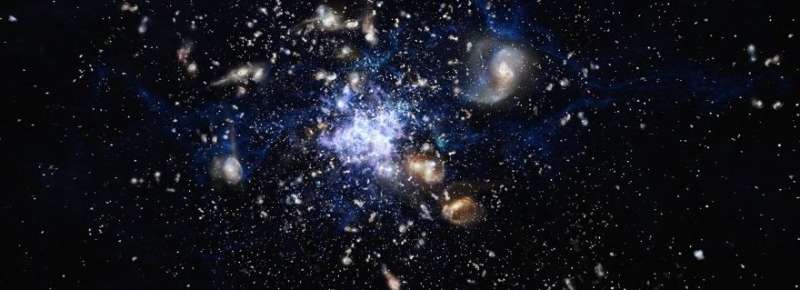Chemistry can change the ingredients in planet formation

Planet and star formation starts with a lot of material collapsing, falling down onto itself because of gravity. In the middle of this, a protostar is being formed. This star will then start to get warm and eventually glow. "Around this forming star, there will be a round, circulating area. This area is called a disk and is full of a lot of material. We're talking about a lot of gas, for example, CO2 and water. And then there are some small particles which we call dust: very tiny, almost sand grains that are not gas."
Very close to the forming star, there are regions getting quite hot because of the emitted starlight. This can cause molecules to become vaporized. Further away from the star, where it is colder, these molecules start to lay down on top of the small grains and become ice particles on these grains. "The Earth and all the planets in our solar system are built from this material in various, different ways, taking up to 10 million years for the whole sequence. So, understanding what this material is and what it does over time, is important not just to predict where other planets might be formed in space but also to understand our history here on Earth."
Currently, there are several theories on how planets are formed from this material. Usually, there are different dust grains that stick together. Through various mechanisms, these particles can grow bigger and bigger to form big, round planets. These planets can eventually get an atmosphere made out of the gas around them. "What I investigated in my paper was a different side to this planet formation scenario than investigated before. I wanted to check if all these molecules and ice molecules on the grains could react with each other chemically. Could two molecules meet each other to produce a new molecule? This is what is called chemical evolution."
Chemical evolution has not been investigated much because the computer model and the code to simulate these reactions are very complicated. They require a lot of computing power and information from research laboratories. Eistrup set up his chemical model and then instructed it to make these reactions happen. The goal was to see if the amount of molecules he entered in the beginning, had changed by the end of the simulation. Then, he would repeat it with several different molecules with variations in the amounts of each molecule. "We indeed found that the amount of each molecule changed over time. This means that chemical evolution happens. This could change our understanding of what planets, like the Earth, were made of and how life on Earth formed."
Eistrup and colleagues already concluded in previous models that ionisation of the disk molecules is needed to form more complex molecules. Ionisation means that a neutral atom or molecule becomes electrically charged: ions. Ions are very keen on reacting with other molecules. "What I found was, if there was a lot of ionisation in a planet-forming region, it will speed up the chemical evolution. This creates more complex molecules over time. This affects which molecules go into forming planets and their atmospheres."
Provided by Leiden University





















